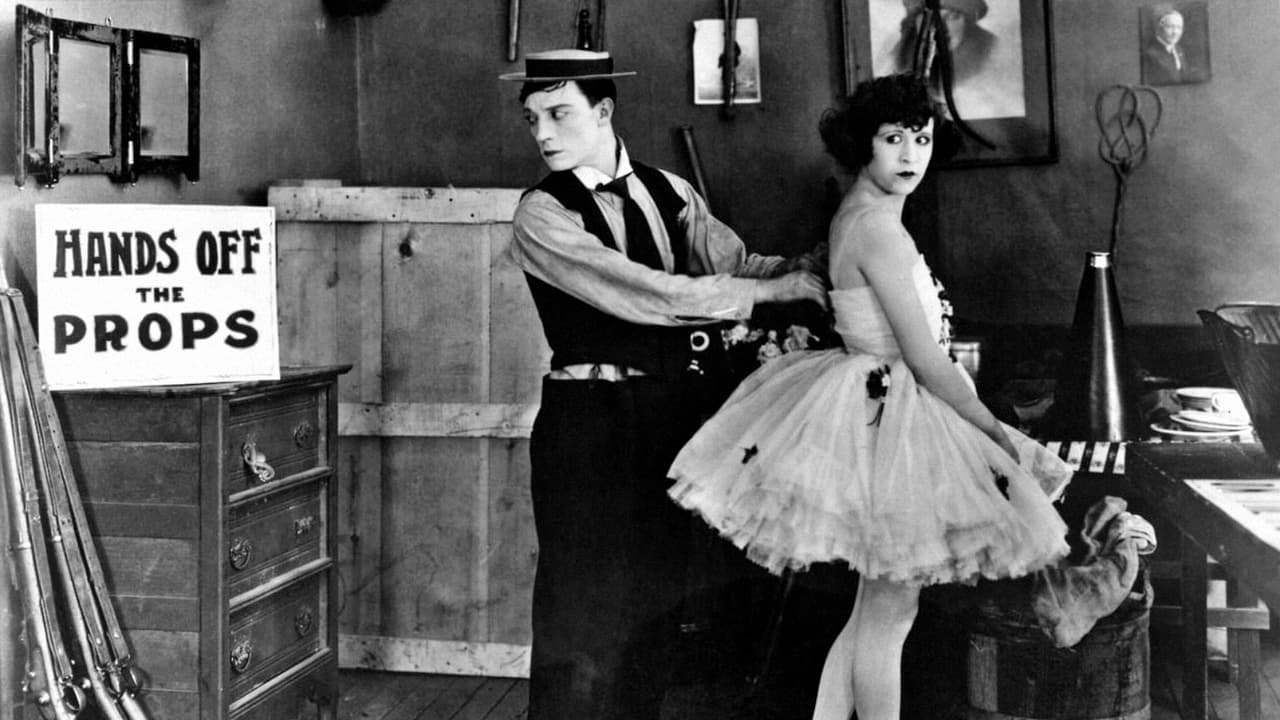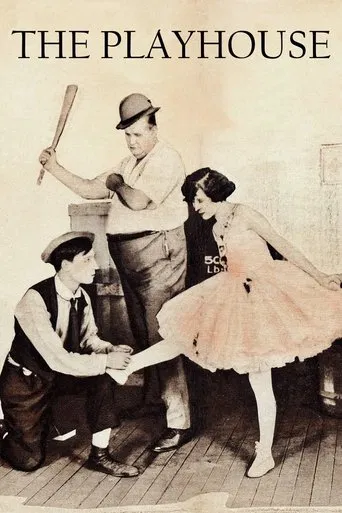

i know i wasted 90 mins of my life.
... View MoreBest movie of this year hands down!
... View MoreA Brilliant Conflict
... View MoreI didn’t really have many expectations going into the movie (good or bad), but I actually really enjoyed it. I really liked the characters and the banter between them.
... View MoreBuster Keaton shows off some of his signature blend of physical comedy, visual puns and amazing gags in this great short. Although instances of black-face date the film, I find it greatly relateable even over 100 years after the release. A great laugh for anyone who has played an instrument or been involved in a theatrical production. It gets a 9/10 because the only thing it is missing is an ending to rival Keaton's longer works.
... View MoreBuster Keaton goes to the theater and sees the stage full of Keatons. In The Playhouse from 1921 Buster plays not only the actors, but also members of the audience (including women and one kid), staff members and even a monkey. And he also has time to fall in love with a girl (Virginia Fox). The only problem is that she has a twin sister, and he has hard time telling which is which. This silent short made me laugh more than once. Buster as the monkey is something hilarious. And when Buster puts off a beard fire with an axe! This movie is a fine proof of Keaton's talents. He was truly a master in physical comedy. And what a fine example of movie magic- the 1920's style- this movie is. In the minstrel show you see nine Keatons on stage. That's really something!
... View MoreMichael Keaton's real name is Michael Douglas, but for obvious reasons he had to change it. He selected "Keaton" as a tribute to the most inventive physical comedian in the history of cinema, Buster Keaton.In 1996, Michael Keaton starred as multiple copies of the same character in the film "Multiplicity". I suspect he knew his namesake had beaten him to the punchline some 75 years earlier.In "The Play House", Keaton used carefully timed multiple takes and repeated exposures to have as many as 9 copies of himself in the same picture at the same time. Keaton is simultaneously the conductor, six musicians, 9 members of a chorus line and at least 5 members of the audience. It takes away nothing to note that this is all a dream sequence.But the segue from the dream sequence to the main story contains one of the most brilliant twists I've ever seen in a film of any era. Buster is awakened from his slumber by a cruel looking man who orders him out of his room. In the background, the "landlord's" aides take away the furniture from Buster's "apartment", then his bed, and then remarkably the very walls of the room! We back up to find that this is not Buster's home - he has fallen asleep on a bedroom set of a stage.Buster is a worker at a variety show, and most of the rest of the film has him replacing everything from a soldier to a magician's assistant to an orangutan, with frequently hilarious results.Buster Keaton's "The Play House" is that rare silent comedy that stands the test of time. While much of Chaplin, Lloyd or the Keystone Kops output seems juvenile, coy, silly or just plain unfunny, Buster Keaton's work still can cause you to laugh out loud.During the dream sequence, on one title card an audience member (Keaton) reads the playbill and notes "This fellow Keaton seems to be the whole show." Yes, but what a show!
... View MoreThis has to be one of the strangest, most daring films ever made by a major Hollywood studio, and surely the funniest and most perceptive study of madness in all cinema. The first ten minutes are a breathtaking display of bewildering surrealist magic. Buster Keaton buys a ticket for a variety show. Buster Keaton conducts an orchestra of Buster Keatons, defeated by their hostile instruments. An art-deco line of Buster Keaton minstrels have a calm discussion, while pairs of male and female Buster Keatons make up the audience, restless, spiteful and belligerant.This is stunning cinema in any language (arf), and a supreme visualisation of mental breakdown, distorted personality, megalomania, and the most terrifying anxieties. It is also an hilarious pre-empting of the auteur theory - the elaborate playbill reveals Buster Keaton to be responsible for EVERYTHING, from scenario to lighting - this monopoly of creativity leads to chaos, madness, fragmentation and estrangement.As in so many of Keaton's films, this remarkable fantasy is shown to be the dream of a lowly, bullied man, this time a theatrical hand. Far from diminishing the film's dreamlike structure, this revelation intensifies it. An astonishing series of variations on the line between art and life, dream and reality ensues, an argument which descends into ever-increasing spirals of confusion and disintegration.Some of Keaton's best comic set-pieces follow, all hilarious in themselves, yet underlining the melancholy and fears of Buster himself - be he ordinary man or isolated genius. Life can never remain stable for him, his personality is shot to pieces - whether through existential crises or booze is unclear; like Gulliver in Houyhnhm land, his humanity is stripped to the level of bestiality - a very funny, subversive sequence, which is as despairing as the end of NIGHTMARE ALLEY. The supposedly redemptive love interest is a bewildering, tormenting game on Buster, as he repeatedly fails to remember which twin is his fiancee. The continually collapsing sets are a thematically rich, Usher(playhouse, geddit?)-like representation of Buster's fragile mind. To universalise the genius of Buster Keaton is to belittle and emasculate him. He is like us only because his trauma is so particular.
... View More